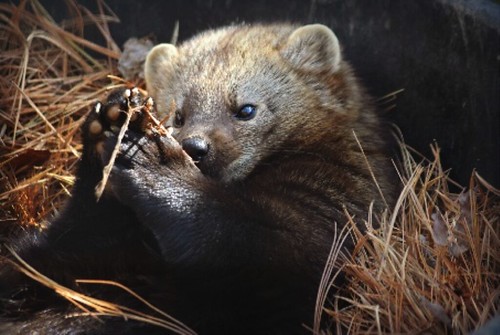
Viscous, stratified, and hot to the touch, a five-gallon water tank bubbled with unknown chemicals at an illegal marijuana grow site in California’s San Bernardino National Forest. Marijuana growers most likely planned to use this brew as a high-powered pesticide to keep any and all animals away from their marijuana plants.
On U.S. Forest Service land in California alone, more than 400 illegal grow sites have been identified. This is in part because international drug organizations have traditionally set up illegal grow sites on national forests in California.
However, organized sites are now popping up as far east as North Carolina, and smaller, unorganized grow sites occur in most states. These sites pose problems for Forest Service law enforcement, the public, and the environment – with pesticides poisoning wildlife, soil, and water.
“There’s no telling what you’ll run into out there,” said Chris Boehm, Deputy Director of Forest Service Law Enforcement and Investigations. Many sites harbor booby traps, and the growers themselves are often armed. Law enforcement agents are trained to safely navigate most of these hazards, but if members of the recreating public encounter a grow site, the situation can quickly turn unsafe.
The bubbling vat on the San Bernardino National Forest is an example of what even law enforcement agents aren’t prepared to handle during an initial raid due to the potential toxicity to both people and the environment.
“Some of the [pesticide] is so concentrated animals die in a matter of minutes, if not seconds,” said Forest Service researcher Craig Thompson.
Researchers frequently find dead squirrels, bears, and birds, and other animals killed by the pesticides used on these grow sites. Once an animal consumes and dies from pesticides, the chemicals continue powering through the entire food web as scavengers feed upon poisoned carcasses. At one site, researchers found a dead fox, a dead vulture that had been feeding on the fox, and dead insects that had landed on both.
Because growers spray pesticides and add them to irrigation systems, the chemicals also seep into the soil and surrounding waterways, which can kill aquatic species and potentially compromise the safety of people’s drinking water downstream.

To reduce the grow site impacts and discourage illegal growers from returning, Forest Service and partner law enforcement agents, scientists, safety experts, and others plan and carry out clean-up efforts to remove the plants, irrigation infrastructure, waste, and chemicals. If they leave these resources intact, growers will return and reuse the same site.
Many grow sites are in remote locations and difficult to access, making remediation efforts challenging and costly. Helicopters must be used to air-lift tons of garbage and miles of irrigation piping. Partial HAZMAT protocols must be followed, and decontamination kits used to contain and clean up the waste.
Last year Forest Service staff and partners removed more than 11,000 pounds of trash, 1,250 pounds of fertilizer, and numerous toxic chemicals from just one illegal site.
If you encounter what you believe may be an active grow site here are some suggestions on what to do and what not to do:
DO:
- Leave the area in the same way you came in, retracing your steps.
- Make observations of what you see.
- Once clear of the site, report your findings to the Forest Service or local law enforcement officials and relay your location and observations.
DON’T:
- Linger at the site.
- Call attention to yourself.
- Touch anything that looks out of the ordinary.




